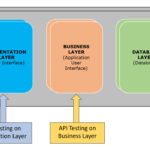- Nov 03, 2018
- admin
- 0
Selenium with Java Training
Selenium Course Objectives
Once you successful complete the course of Selenium testing with Java, you are capable of –
- Learning the Selenium Architecture and its related components
- Recording and playing the tests using Selenium IDE
- Finding out the test elements making use of Locators by id, by name, by class, by tag name, by linktext, by css, by xpath, etc
- Being trained in Selenium WebDriver/ Selenium 3.5
- Automating Editbox, Drop downList, Link, Checkbox, Radio Buttons, Tables, Calender, Keyboard and mouse operations.
- Conducting the handling process of Alerts and Multiple windows operation
- Authenticating the page contents making use of Selenium WebDriver
- Drafting Tests using TestNG
- Learning TestNG Annotations, Assertions, Generating Test Reports etc.,
- Learning the process of creating and running of the Test Suits using testng.xml
- Developing Reusable automation Tests
- Producing Customized Test Results with
- Making use and implementation of WebDriver advanced features e.g. taking screenshots, handling cookies and for managing Exceptions
- Developing Data driven, Keyword driven and Hybrid test frameworks
- Managing Cross browser testing with Mozilla Firefox, Google Chrome, IE, Safari and Opera
- Conducting Cross platform testing with windows, unix and mac etc.,
- Performing distributed automation testing using Selenium GRID
- Working with windows applications with AutoIt.
- Working with the Project dependency management system using MAVEN
- Scheduling Tests with Jenkins
CURRICULUM
Java Essentials for Selenium
Java Programming Basics
- Why Java for Selenium
- Installing Java
- Installing Eclipse
- First Eclipse Project
- First Java program
- Concept of class file
- Datatypes in Java
- String class and functions
- Practical Examples on Strings handling
- Conditional Statements
- If…else…
- Switchcase
- Practical Examples with conditions
- Loops
- While Loop
- For Loop
- Practical Examples with loops
- Arrays
- Single Dimensional Arrays
- Two Dimensional arrays
- Practical usage of arrays in Selenium
- Operators
- What are Functions?
- Function Input Parameters
- Function Return Types
Object Oriented Programming in Java
- Local Variables
- Global Variables
- Static and Non-Static Variables
- Static and Non-Static Functions
- Creating Objects in Java
- Meaning of static
- Why is main method static?
- Object and Object References
- Call by reference and Value
- Overloading and Overriding Functions
- Access Modifiers – Public/Private/Default/Protected
- Constructors
- Interface
- Usage of Objects in Selenium
- Inheritance
- Usage of Inheritance in Selenium
- Creating Packages
- Accessing Classes across Packages
Exception Handling
- Exception handing with try catch block
- Importance of exception handling
- Exception and Error
- Throwable Class
- Final and Finally
- Throw and Throws
- Different Types of Exceptions
- Need of exception handling in Selenium framework
Automating Excel file Operations
- Creating/Opening XLS Files
- Reading/Writing Microsoft XLS Files
- Counting Rows and Columns
- Filling BG/Font Colours
- Practical Examples
Automating Text File Operations
- Creating/Opening Text Files
- Reading/Writing Text Files
- Practical Examples
Automating Database Operations
- Connecting to Databases
- MySQL
- Oracle
- SQL Server
- Sending SQL Queries to Database
- Process the Results
- Practical Examples
Selenium
Introduction
- What is Selenium?
- Who developed Selenium?
- Selenium Components
Selenium IDE
- Installing Selenium IDE
- Creating your First Selenium IDE script
- How to use Locators in Selenium IDE
- How to enhance a script using Selenium IDE
- Creating and Running Tests
- Creating and Running Test Suite
WebDriver Introduction
- Introduction to WebDriver & Comparison with Selenium RC
- Installing Selenium WebDriver
- Architecture of selenium Webdriver
- Creating your First Script in Webdriver
Launching AUT and Inspecting properties of Elements
- Launching AUT in FireFox
- Launching AUT in InternetExplorer
- Launching AUT in Chrome
- Launching AUT in Safari
- Inspecting properties of Elements on different Browsers
- Installing FireBug and FirePath
- Creating FireFox Profile
Automating Operations on various Elements
- Browser
- TextBox
- ListBox
- Links
- Check Box
- Radio Button
- HTML Tables
- Calendars
Automating Keyboard and Mouse Events
- Action Class
- KeyBoard Events
- Drag & Drop Actions
- Mouse Hover Action
- RightClick, Double Click & Tool Tip
Handling multiple Windows
- getwindowHandle()
- getwindowHandles()
- Switching between windows
- Handling elements present in different windows
Handling Alerts
- accept()
- dismiss()
- getText()
- sendKeys()
Handling Frames
- What is iFrame?
- Locating Frames
- Switching between Frames
- Handling Frames
Handling Ajax Components
- Handling Ajax Components
Creating Customize XPath/CSS Selectors
- What is XPath
- When to Use XPath
- Absolute XPath/Relative XPath
- Specifying conditions with XPath
- CSS Selectors
- Customizing CSS Selector
Synchronization
- ImplicitWait
- WebDriverWait
- FluentWait
- PageLoadTimeout
What is TestNG?
- Advantages of TestNG over JUnit
- Why do we need TestNG in Selenium?
- Installing TestNG in Eclipse
- Creating a New TestNG Test File
- Test annotation
- Running the Test
- Checking reports created by TestNG
- Generating HTML Reports
- Annotations used in TestNG
- Validating Tests with Assertions
- Creating multiple Tests
- Prioritizing Tests
- Parameterizing Tests with dataProvider
- TestNG dataProvider with Excel
- Creating and Running Test Suites with TestNG.xml
- Parallel Test Execution with TestNG
- Cross Browser Testing using TestNG
Automation Test Frameworks
- Modular Driven Framework
- Keyword Driven Framework
- Data Driven Framework
- Hybrid Framework
Page Object Model (POM) & Page Factory in Selenium
- What is POM
- Why POM?
- Advantages of POM
- Creating POM Tests
- What is Page Factory?
- Creating Tests with Page Factory
Database Testing using Selenium
- JDBC (Java Database Connectivity)
- Driver Manager
- Driver
- Connection
- Statement
- ResultSet
- SQLException
- Connecting to DataBases
- Sending SQL Queries to Database
- Processing Results
- Real-time examples of Database Testing with Selenium
AutoIT
- Installing AutoIT
- Components of AutoIT
- Using FinderTool
- AutoIT commands
- Creating Scripts in AutoIT
- Creating executable files
- Running AutoIT Scripts from Selenium
Selenium GRID
- What is Selenium Grid?
- When to Use Selenium Grid?
- What is a Hub and Node?
- How to Install and Use Grid 2.0?
- Designing Test Scripts That Can Run on the Grid
- Using the DesiredCapabilites Object
- Using the RemoteWebDriver Object
- Running a Sample Test Case on the Grid
- Sequential and Parallel Test Execution
- Running Tests on different Operating Systems
- Running Tests on different Browsers
Maven & Jenkins
MAVEN
- What is Maven and Why Maven?
- Installing/Configuring Maven
- Creating Maven Project
- Importing Maven Project into Eclipse
- What is POM.xml?
- Adding Dependencies to POM.xml
JENKINS
- Installing/Configuring Jenkins
- Scheduling Test Execution in Jenkins
- Auto mail configuration in Jenkins
- What is continues integration?
- Continues integration with JENKINS
GIT
- Downloading and Installing GIT
- Installing GIT and GITHUB plug-ins for JENKINS
- Configuring SSH host keys for GIT and JENKINS
- GIT Bash commands
- Uploading project to GIT
LOG4J
- Introduction about Logging
- Logging problems without Log4J
- How to solve Logging problem with Log4J
- What is Layout?
- Different types of Layouts in Log4J
- What is Appender?
- Different types of Appenders
WHO CAN LEARN?
Any fresh graduates, students, working professionals, manual testers & who wish to learn this course in order to transform as an Automation Test Engineer can go for this course. Selenium is the best automation testing tool that is in demand in the Software Testing Industry in india, usa, canada, uk, australia etc.. People having the fundamental knowledge of the Object Oriented programming tools can easily join for this course.



